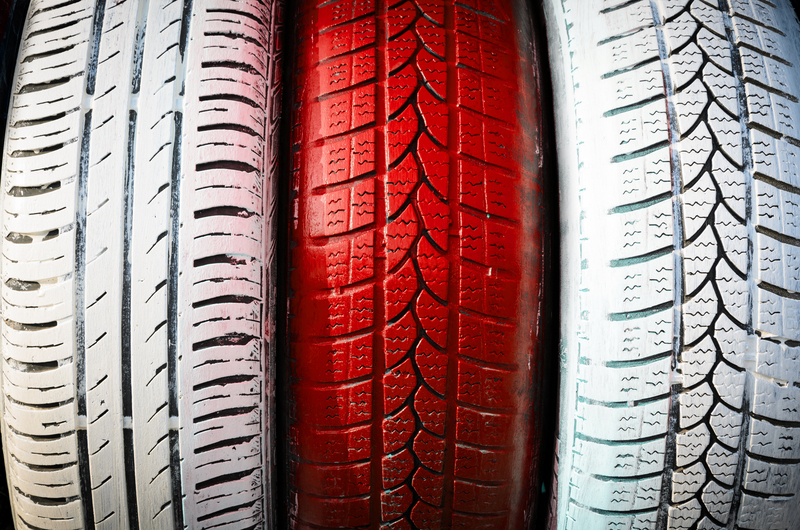Essential Steps for Responsible PPE Waste Disposal
The global increase in the use of Personal Protective Equipment (PPE) has introduced new challenges for waste management systems. Responsible PPE waste disposal is critical to protect the environment, public health, and ensure compliance with current regulations. This comprehensive guide explores the necessary steps, best practices, and crucial considerations required for effective and responsible PPE waste disposal.

Understanding the Importance of Responsible PPE Waste Management
Personal Protective Equipment waste--including face masks, gloves, face shields, and gowns--has become ubiquitous across healthcare, industrial, and public spaces. Poorly managed PPE waste poses several threats:
- Environmental Pollution: Plastic-based PPE contributes to land and marine litter.
- Public Health Hazards: Used PPE may be contaminated with pathogens, posing infection risks.
- Resource Inefficiency: Inadequate segregation leads to increased volumes of hazardous waste and escalates treatment costs.
Implementing responsible PPE waste disposal methods is not just an organizational necessity--it's a societal duty.
Step 1: Identification and Categorization of PPE Waste
Before disposal can begin, it is essential to identify and categorize PPE waste.
What Qualifies as PPE Waste?
- Single-use face masks (surgical and N95)
- Disposable gloves
- Protective gowns and aprons
- Face shields and goggles
- Shoe covers and hairnets
Not all PPE waste is treated equally. Some may be considered general waste while others, particularly those from healthcare facilities, must be classified as hazardous or infectious waste. Accurate classification is a fundamental step for responsible PPE disposal.
Segregating PPE Waste Stream
Segregation ensures that PPE waste follows the correct handling, treatment, and disposal path:
- Non-contaminated PPE: Generated in non-clinical, low-risk environments--may be treated as general waste given local guidelines.
- Contaminated PPE: Used in healthcare or areas with known exposure to infections--must be disposed of as hazardous or infectious waste.
Step 2: Proper Collection and Containment of PPE Waste
Collection of PPE waste should be safe, orderly, and in compliance with relevant regulations. Below are key practices for responsible PPE waste collection:
Use of Clearly Marked Disposal Bins
- Label disposal bins for PPE waste with distinct colors and symbols (e.g., yellow for infectious, black for general, red for sharp).
- Place bins in easy-to-access locations at entry and exit points, break rooms, and high-traffic zones.
- Ensure bins are foot-operated or touchless to minimize cross-contamination.
Employee Training
Staff and users must be educated in responsible PPE disposal protocols. Training should cover:
- Correct segregation and bin usage
- Reporting spills or incidents
- Use of hand hygiene after disposal
Step 3: Safe Transportation of PPE Waste
Transporting PPE waste from generation points to treatment or storage facilities must follow stringent safety practices.
Precautions During Transportation
- Seal bags or containers securely before moving.
- Use dedicated trolleys or carts marked "PPE Waste Only".
- Avoid overfilling to prevent leaks or accidental exposure.
- Record and document waste movement in accordance with regulatory requirements.
Step 4: Appropriate Treatment of PPE Waste
PPE waste treatment requirements vary based on its classification. Adhering to appropriate treatment methods is at the core of responsible PPE waste disposal.
Common PPE Waste Treatment Methods
- Autoclaving: Use of pressurized steam to disinfect infectious PPE waste prior to disposal.
- Incineration: High-temperature combustion of PPE waste, suitable for contaminated materials that cannot be recycled.
- Landfilling: For general PPE waste, but only in engineered landfills to prevent environmental leakages.
- Chemical Disinfection: Application of chemical agents to destroy pathogens on used PPE before disposal.
Note: Single-use plastic PPE should never be openly burned or dumped due to the release of toxic pollutants.
Emerging Trends: Eco-friendly Treatment Alternatives
Innovations are being explored to minimize the environmental impact of PPE waste:
- Advanced thermal disinfection coupled with material recovery
- Pyrolysis of PPE plastics to create fuel or raw materials
- Biodegradation techniques for compostable or eco-certified PPE products
Responsible PPE waste disposal must continue to adapt as new, greener methods become available.
Step 5: Safe Final Disposal and Documentation
After treatment, the waste must be disposed of in a manner that minimizes risk to people and the environment.
Disposal Guidelines
- Place treated and non-hazardous PPE waste in approved municipal landfills.
- Hazardous PPE waste, once treated, must be disposed of in compliance with local, state, and national regulations.
Documentation and Traceability
Recordkeeping is a cornerstone of both responsible PPE disposal and regulatory compliance:
- Maintain records of the type, quantity, and treatment of all PPE waste disposed.
- Implement digital tracking for large-scale facilities to ensure traceability and accountability.
- Periodically audit disposal practices for continuous improvement.
Step 6: Promoting Reuse and Reduction of PPE Waste
Minimizing the generation of PPE waste is arguably the most effective approach to responsible disposal. Organizations and individuals can:
Adopt Reusable PPE Where Feasible
- Utilize washable, multi-use face masks and gowns in non-clinical settings.
- Encourage innovation in PPE design that combines safety with sustainability.
Source PPE Responsibly
- Purchase certified biodegradable or recyclable PPE products where available.
- Work with suppliers on closed-loop return and recycling programs.
Conduct Waste Audits
- Identify opportunities to reduce PPE usage without compromising safety.
- Adjust procurement strategies based on audit results.
Enforcing Regulations and Improving Public Awareness
Regulatory frameworks and public awareness are vital for ensuring responsible PPE waste disposal at every stage--from individuals at home to large institutions.
Key PPE Waste Disposal Regulations
- Adhere to OSHA, EPA, WHO, and local authority guidelines for handling and disposal.
- Stay updated on changes to waste management standards, especially during public health crises.
Educating the Public and Organizations
- Launch awareness campaigns on proper PPE disposal practices.
- Display clear signage and instructions near disposal bins.
- Offer guidance on responsible better choices, such as switching to reusable masks where appropriate.

Challenges in PPE Waste Disposal
Despite best efforts, obstacles remain in establishing a fully responsible PPE waste disposal process:
- High Volume: Pandemic surges overwhelm existing waste management systems.
- Lack of Infrastructure: Not all communities have access to advanced treatment facilities.
- Improper Segregation: Results in unnecessary contamination and increased risk.
- Insufficient Training: Leads to unsafe handling and environmental exposure.
Addressing these challenges demands coordination among government, industry, and the public.
Conclusion: A Collective Commitment to Responsible PPE Waste Disposal
Managing PPE waste responsibly is essential for a healthier planet and society. By following these steps--identifying and categorizing waste, ensuring proper collection, safe transport, appropriate treatment, secure disposal, reducing waste generation, and upholding compliance--we can reduce the risks associated with improper PPE waste management.
It's vital for all stakeholders--healthcare providers, organizations, and everyday citizens--to take an active role in responsible PPE waste disposal. Investing in proper systems, fostering awareness, and embracing sustainability will ensure that we protect our communities and ecosystems now and in the future.
Take Action Today!
- Review your current PPE disposal practices.
- Educate your staff and community on the significance of responsible PPE waste management.
- Support and advocate for sustainable policies and innovations in PPE and waste management.
Responsible PPE waste disposal is not just a regulatory obligation--it's a shared responsibility and an investment in a safer, cleaner tomorrow.
